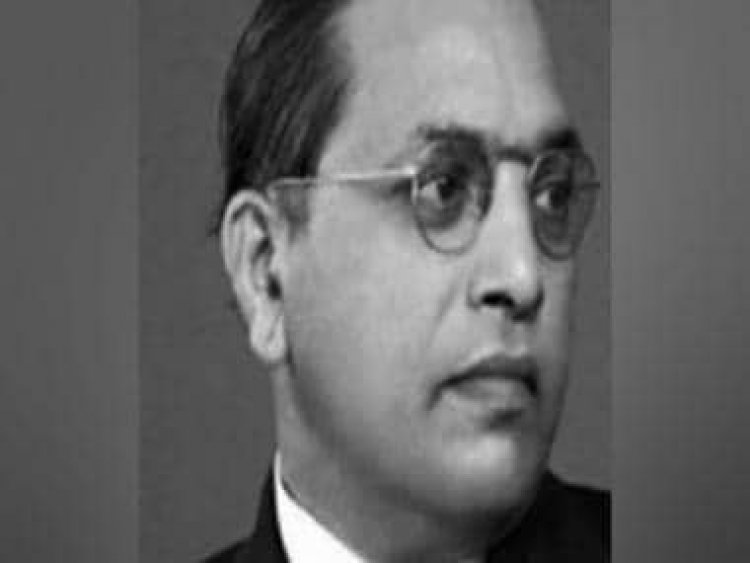Hindutva and Hind Swaraj | Does India need a new Constitution?
Hindutva and Hind Swaraj | Does India need a new Constitution?

Teacher: November 26th was Constitution Day. Our Constitution was adopted on this day in 1949 by the Constituent Assembly of India. Its 299 members signed off on the document which is the principal basis of our existence as an independent country, including the state’s division of powers between the legislature, executive, and judiciary.
Student: How long did it take to draft the Constitution?
Teacher: Well, it depends on how you count it. It was on 9 December 1946, that pre-Independence India’s Constituent Assembly first met. Then, the following year, on 14 August, they re-convened on the eve of India’s Independence.
Student: Why is the latter date important?
Teacher: Prior to that, the Constituent Assembly functioned at the pleasure of the British Parliament and the colonial Government of India. Now, they were a sovereign body, empowered to produce that fundamental document which would be the basis of our nationhood and self-government. But there is one more reason that 14 August 1947 is important.
Student: It is Pakistan’s Independence Day.
Teacher: Exactly. It was the day India was partitioned.
Student: A truncated independence for us?
Teacher: Very few people realise that even the Constituent Assembly was partitioned, as were the armed forces, police, and other organs of the government.
Student: How was the Constituent Assembly constituted?
Teacher: It was an outcome of the Cabinet Mission plan of 1946, an initiative of Clement Atlee, the post-War Labour Prime Minister of Britain.
Student: How were the members chosen?
Teacher: By elections. But the whole scheme was somewhat complicated by the fact that the Congress, the single largest political party in the country, and the Muslim League, which was spearheading the Pakistan Movement, couldn’t see eye to eye.
Student: Most of us don’t know this history. We are not taught it in school or college.
Teacher: That is why we are so uninformed about our Constitution.
The voting was by a single, transferable vote, based on proportional representation.
Student: The beginnings of the quota system?
Teacher: You could say that. Essentially, eligible voters had to cast their ballots in their order of preference. The total seats in the Constituent Assembly were 389, of which 292, over 2/3rds, came from territories directly under colonial rule. Of the remaining, 93 came from the Princely States, and four from what were known as “chief commissioner provinces” — Delhi, Ajmer-Merwara, Coorg, British Baluchistan.
Student: Then what happened?
Teacher: The British Indian provinces sent back their representatives by August 1946, just a year before independence. Naturally, the Congress came out on top, with 208 members to the meagre 73 of the Muslim League.
Student: And the Muslim League went back on their pledge to respect the ballot?
Teacher: Exactly. They engineered riots, with Direct Action Day of 16 August 1946. Over 4,000, certainly more Hindus than Muslims, were butchered in the “Week of the Long Knives.”
Student: And the newly elected Constituent Assembly fell apart?
Teacher: The Muslim League demanded a separate Constituent Assembly for Pakistan. In the year of violence and unrest that followed, both the British colonial authorities and the Congress played into the hands of the Muslim League.
Student: What do you mean?
Teacher: In 1947, on 3 June, Lord Mountbatten, the last British Viceroy of India, scrapped the Cabinet Mission, also announcing a separate Constituent Assembly for Pakistan. On 14 June, the Congress passed its so-called “Partition Resolution,” with Mahatma Gandhi staging a walkout. Partition was now a certainty. The following month, on 18 July, the Indian Independence Act was passed. Pakistan became independent on 14 August and India, the next day, on 15 August. The Constituent Assembly, which met on 14 August 1947, was also partitioned, with 299 remaining out of the original 389.
Student: And it was these 299, who met on December 9th, 1946, to take up the onerous responsibility?
Teacher: It took them almost three years, from 9 December, 1946 to November 26th, 1949, to come up with the Constitution. The Chairman of the Drafting Committee was BR Ambedkar.
Student: That is why he is called the architect of the Indian Constitution.
Teacher: And rightly so. Although he did not write it single-handedly, there were parts of it in which he took a special interest, as scholars such as Aakash Singh Rathore have shown.
Student: When did our Constitution come into effect?
Teacher: Two months after the members signed off, on January 26th, 1950.
Student: That is our Republic Day!
Teacher: Yes, the day we became a Sovereign, Democratic Republic.
Student: But our Preamble says that we are “Sovereign, Socialist, Secular, Democratic Republic.”
Teacher: The two words, “Socialist” and “Secular” were smuggled into the Preamble with its 42nd Amendment.
Student: Really?
Teacher: In 1976, by then prime minister, Indira Gandhi, that too during the Emergency.
Student: You mean the very Emergency during which the Constitution itself was, in effect, suspended?
Teacher: Yes. The Emergency suppressed civil liberties and suspended our fundamental rights. Worse, the Prime Minister, working under the President of India, normally the first among equals in the Cabinet and answerable to the Parliament, virtually usurped all the powers to herself. Parliament was also dissolved and till the elections in 1977, we were virtually a dictatorship.
Student: Would you say that the Constitution itself shows a “dual consciousness” if not a divided legacy?
Teacher: You’ve hit the nail on the head. Perhaps, we are still suffering the after-effects of that Constitutional divided consciousness.
Student: This is what we must discuss on the occasion of India@75.
[To be continued]
The writer @makrandparanspe is an author, columnist and professor at Jawaharlal Nehru University. Views are personal.
Read all the Latest News, Trending News, Cricket News, Bollywood News,
India News and Entertainment News here. Follow us on Facebook, Twitter and Instagram.
What's Your Reaction?

























































